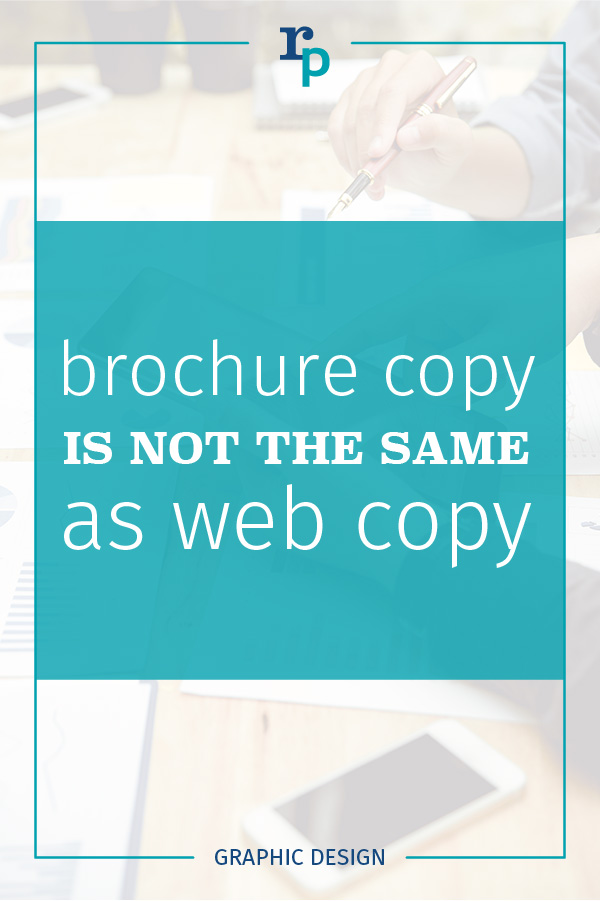Why Brochure Copy Isn’t Meant for Web
Print may be dead, but no one’s told that to the brochure. Small and big businesses alike seem to love to produce the photo-filled, glossy documents, printed on thick paper and containing information about products or services they offer. The brochure is a great vehicle for informing prospects and customers about a business, so it seems logical that copy used on brochures would also work for another platform – a company website.
Brochure Copy vs. Web Copy
Unfortunately, you cannot just take the writing from a brochure and paste it into your website. Brochure copy and web copy, while both working to sell a product or service, are created for different purposes.
Brochures are designed to pull you through from the front cover to the back end and to give enough information to get someone interested. Text is brief and to-the-point, broken up in short paragraphs and bullet points; the text needs to be compelling in just a few words and can read as very sales-y. The cover and fold-style of a brochure is important as it should be inviting and also able to stand by itself in a rack or display.
Web copy is longer, focused on informing the reader, but also spurring them to action. The text is less of an upfront sales pitch because a web page allows for more writing and a softer sell. A brochure’s main purpose can be to get a reader to contact a business or buy something, whereas a website can urge customers to contact a business, download a whitepaper, or even select a product and checkout. Web copy should be longer and written to appeal to web readers as well as search engines.
Brochures can work together with your website if you list your website URL or use a QR code that will send readers to your website. This is helpful if you’re at a conference or event, let’s face it, you can’t exactly hand out web pages.
Recycling Brochure Copy
So, you have this informative brochure, what do you do with it? Even though you can’t copy it word-for-word, you can still use the information from the brochure to create a copy outline for a webpage. You will still do the re-writing, but you will at least have a starting point. To start, you’ll need to check that your brochure content is up-to-date since many brochures can become obsolete shortly after they’re printed.
Brochures go from point A to point B, but web pages are interconnected. A brochure may be selling several products, but a web page will typically have one main goal, for example to get customers to buy, read, download, or do. Webpages establish this “path” to a sale by using CTAs or in-text links. As such, the copy should be focused on the action you’d like a customer to take. Also consider how readers tend to jump around on websites, the opposite of how they’d read a brochure.
The text in your web page can also include pictures, videos, and graphics focused on that page, unlike a brochure. Your web copy should be much more in-depth than the brochure and written to include keywords and synonyms, which will help people find it when they search for a key term on the page. If the brochure has a lot of varied information, it may be best to create several web pages from the information.
Ultimately, there’s not a one-and-done solution to web copy, but you don’t need to throw your brochures away. A brochure can help you form the outline for an informative and attractive web page and if you have trouble doing it on your own, you can always hire a professional copywriter.
Listen for more on this topic.
ready to work on your brand?
Grab a copy of our brand resource kit today.

Rebrand with Design Thinking
What is design thinking and why is it so popular? Well, it's a process used to redefine problems...
Big Brands aren’t Better
Is it true that brand-name products are superior, or does the power of branding make us want to spend that extra dollar?
Evolution of Typography in Web Design
Learn more about the evolution of typography in web design.
Designing the Perfect Blog Feature
Stand Out from the Crowd Designing the perfect blog feature looks different for every company....
